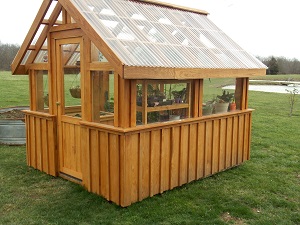At Schutt Log Homes and Mill Works we have had years of experience building Oak log cabins and Oak log homes. In our experience we have found some tools that are a must have when building a log home kit. There is a lot of hype about some of the latest tools and gadgets but we have found for the most part a few old stand-by’s will get the job done efficiently and correctly.
Below is a list of the tools we recommend. Of course everyone has their favorite brand or go to tool. These are the tools, in our experiences, we found to work the best for us.
Chainsaw- We prefer Stihl, but any good brand with a sharp chain will do.
A chainsaw will be one of the most valued tools you will use when building your log home. This tool is portable and versatile. We use a chainsaw to cut the logs to length, to true up wall ends, to trim, notch, wedge, cut out and any variety of cutting to be done on the logs, rafters, joists, you name it. A chainsaw works much more efficiently than a circular saw for cutting the big stuff

A chainsaw is a must have!
.
1/2″ Heavy duty electric drill- We like Makita or Dewalt, they seem to hold up.
A good 1/2″ electric drill is priceless. The drill is used to predrill holes for the TimberLOK screws and to drive the screws in. The drill with a paddle bit is used to counter sink the TimberLOK screws to make all the surfaces flush. This allows the logs to lay level and allows a smooth surface for the planer.
Electric Hand Planer- Makita or Dewalt. same deal, they seem to hold up.
This tool will get used a lot! As the courses of logs are placed the logs are planed to make a level spot to place the next log. When all the logs are in place the face of the logs will be planed to make a clean, smooth surface to apply the chinking and log preservative. The rafters are planed to make a flat, level surface for the roofing material. This tool is a must have.
Sledge-Hammer- Any good heavy brand will do.
For those delicate adjustments. Haha. A good sledge-hammer will save your back when it comes to moving the logs just a few inches this way or that way. It’s a great work horse.
Tape Measure- Any good brand. Buy several they always disappear.
A good long tape measure is a must. It will get worn out! Measure twice, cut once. Need I say more?
Level, Square, C-clamp- These are pretty basic tools for every carpenters tool box.
We recommend having a couple different sizes of each of these items. Depending on the application a long level will work better a small square will be better. Having several c-clamps on hand is always a good thing to hold the logs or lumber in place until it can be affixed permanently.
These are the basics. Of course there will always be a few other tools needed along the way as the log cabin gets into the finish carpentry stages. Schutt Log Homes and Mill Works will be happy to assist you with any building questions. Our log home experts have the knowledge and experience to guide you through your Oak log cabin building process.
LWS


 LWS
LWS








